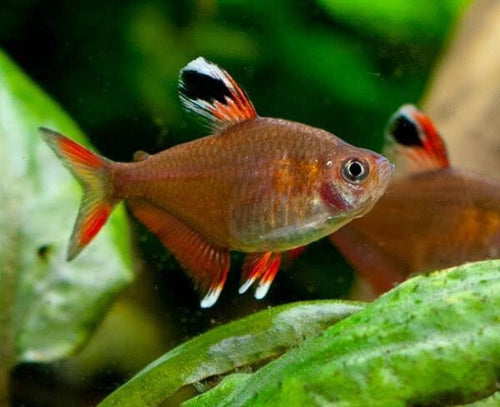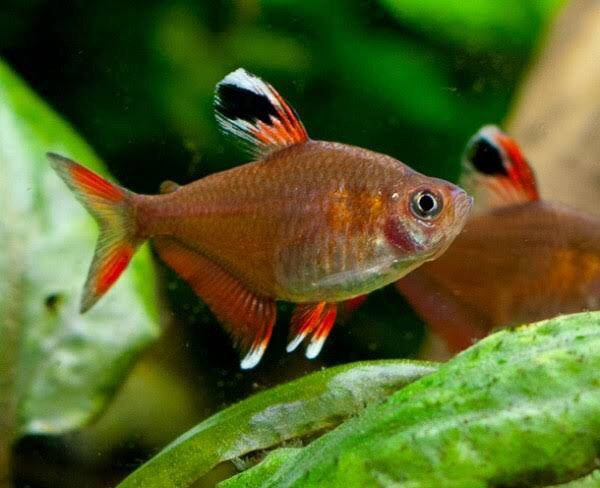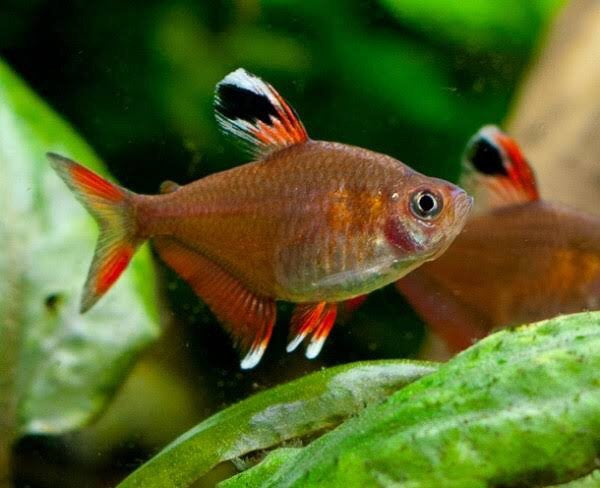Tetra-Rosy
Tetra-Rosy
check_circle Fast Shipping
check_circle Quality Products
check_circle Affordable Price
Reach out to us on ''available to order'' items via WhatsApp or email
Low stock: 8 left
Couldn't load pickup availability

Tetra-Rosy
package_2
Product Description
Product Description
All our fish, shrimp and corals are bagged with fresh oxygen as well as a heat pack in winter.
When ordering livestock please select the box size and add it to your cart for accurate overnight (1-2 days) shipping costs. A small box can take 1-2 bags and a medium box 6 bags. One bag fits max 10 small (1-3cm) fish or max 2 medium (3-5cm) fish or max 1 large (>5cm) fish.
ONE SPECIES PER BAG. Eg: One bag of 10 neon tetra
Scientific name: Hyphessobrycon rosaceus
Common name: Rosy tetra
Family: Characidae
Usual size in fish tanks: 3 - 4 cm (1.18 - 1.57 inch)
Recommended pH range for the species: 5.8 - 7.5
Recommended water hardness (dGH): 4 - 12°N (71.43 - 214.29ppm)
Recommended temperature: 24 - 28 °C (75.2 - 82.4°F)
The way how these fish reproduce: Spawning
Where the species comes from: South America
Temperament to its own species: peaceful
Temperament toward other fish species: peaceful
Usual place in the tank: Middle levels
Origin
The Rosy Tetra originate from South America namely Suriname and Brazil where they inhabit slow moving waters that occur from the main river tributaries. As these are often in dense forests the water becomes acidic from rotting vegetation.
Lifespan
The lifespan for the Rosy Tetra is a maximum of 5 years.
Short description
These fish make a great addition to the aquarium, the males displaying the brightest colouration. Most specimens available in today’s market are tank bred but this does not take away from their beauty, they are also classed as a peaceful species and get on well with other tank mates as long as they are kept in a small group. If one or two specimens are kept they can become fin nippers but a group usually means that they tend to keep themselves to themselves and any fin nipping should not occur. They will be fine in a planted aquarium but these are not necessary as aquatic plants would not occur in their natural habitat. Keep the lighting dimmed and never keep these fish with aggressive tank mates. They will do well with smaller cichlid species, rasboras or similar.
Feeding
Live food, flakes, granules, tablets. Feed them vitamins-rich food.
Sexing
Females are rounder and less coloured than males.
Breeding
Soft water is required. Raise the temperature up to 27-28 °C. It’s recommended to separate the pair from other fish (another tank or a divider). They can be bred in groups if you desire, keep the lighting well dimmed in the breeding tank and condition the parent fish on live or frozen foods prior to them spawning. Floating plants will help with providing spawning sites for the fish else they will scatter their eggs everywhere. Once the eggs have been fertilised and spawning is complete it is wise to remove the parent fish or they will attempt to feed on the eggs. The fry should hatch after a couple of days and once free swimming they can be raised on newly hatched brine shrimp until large enough to accept crushed flake.


